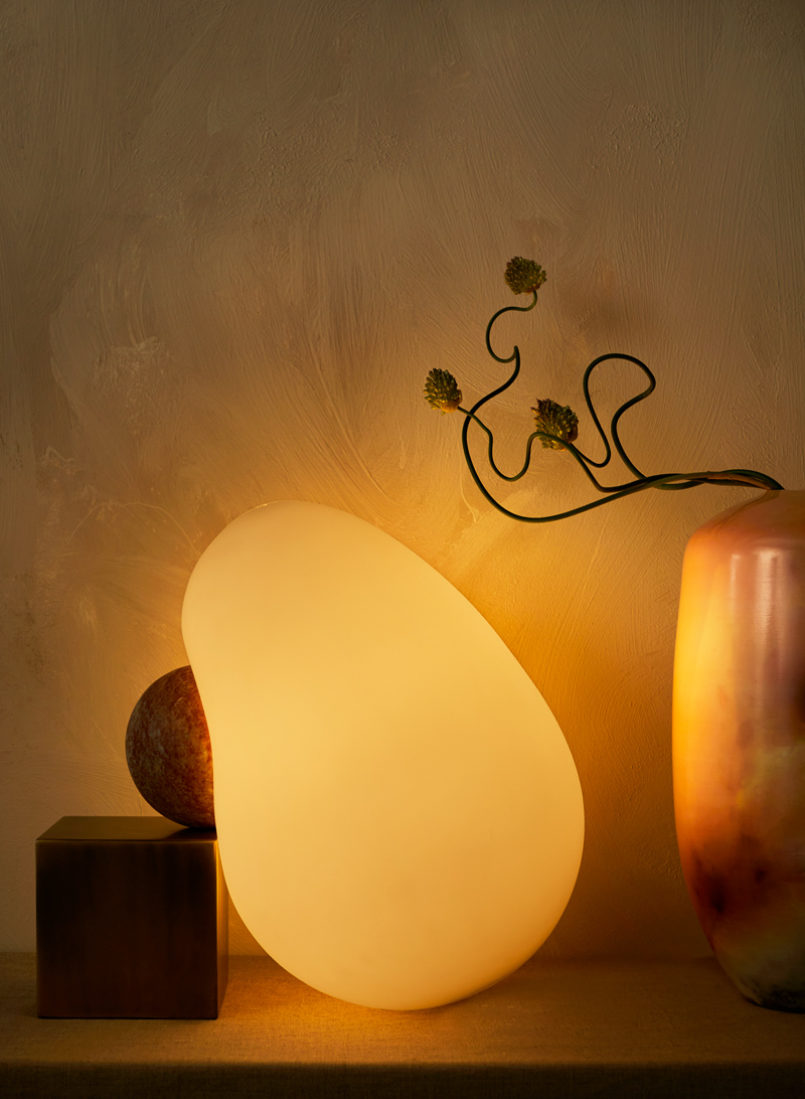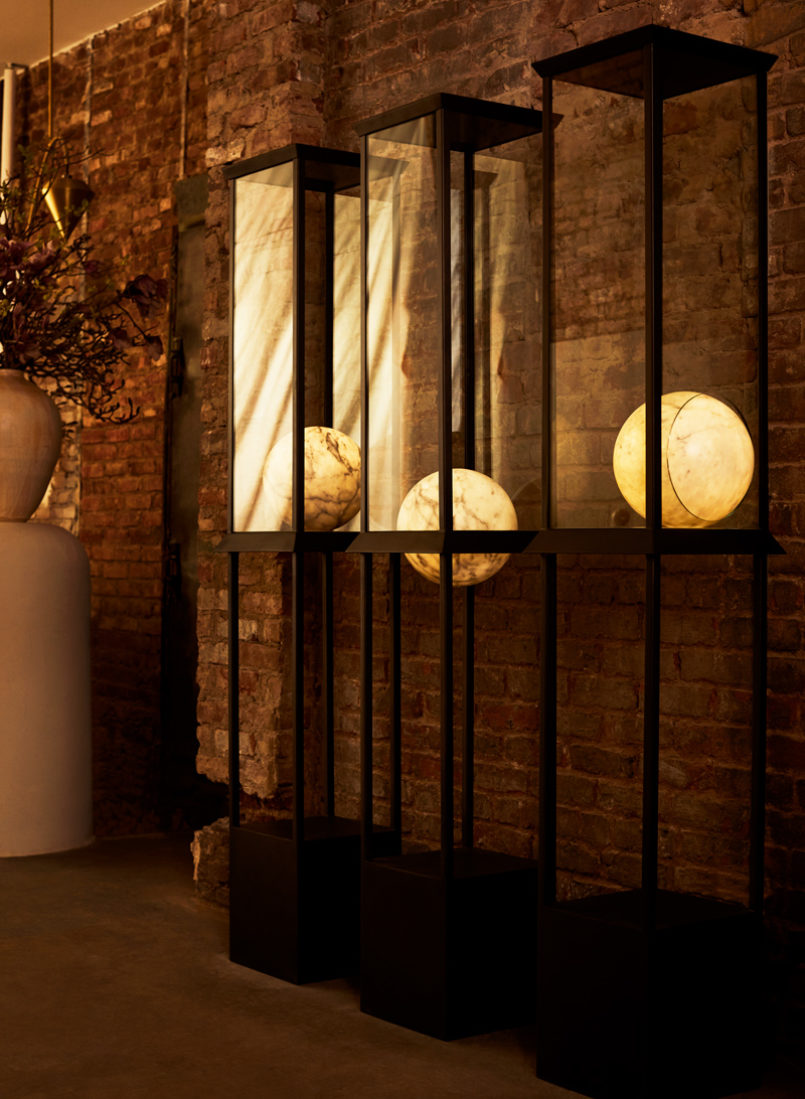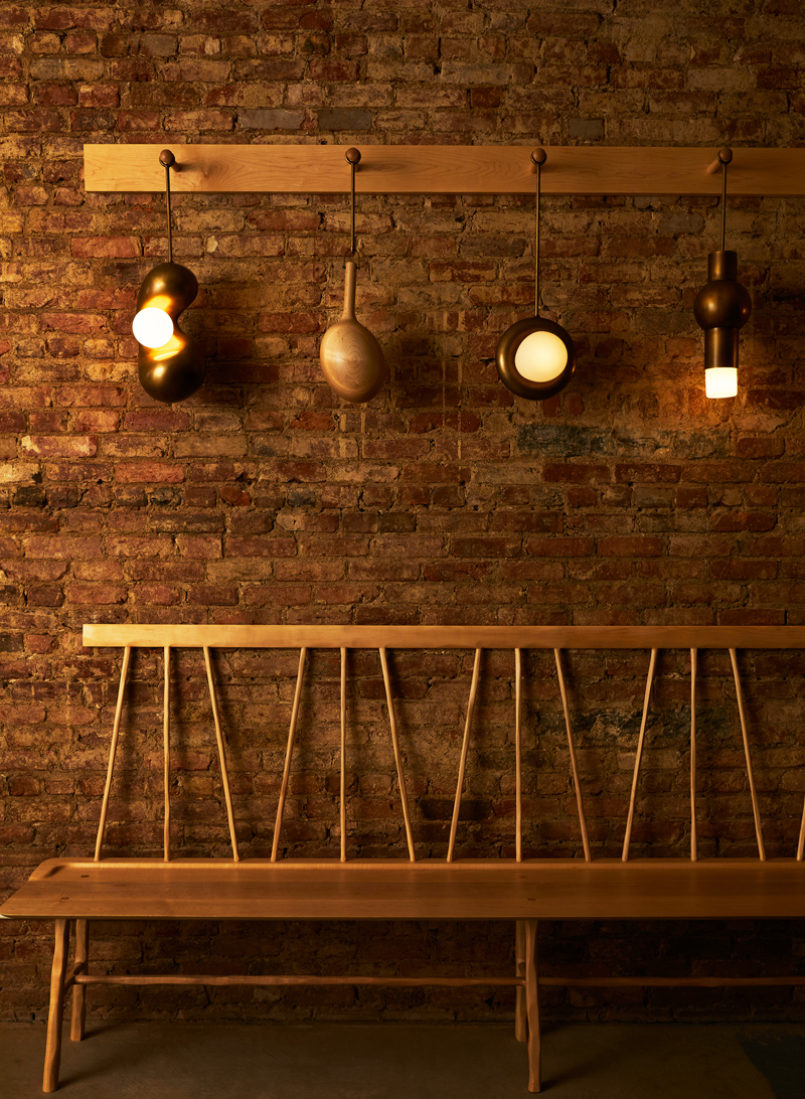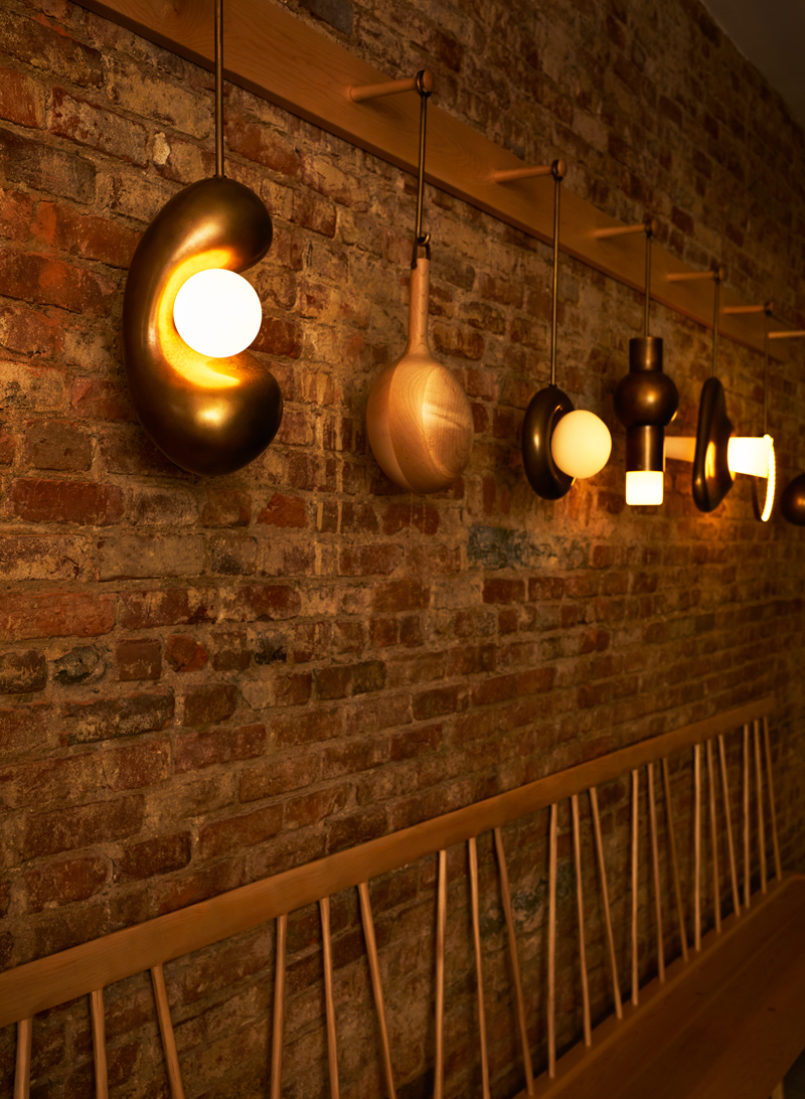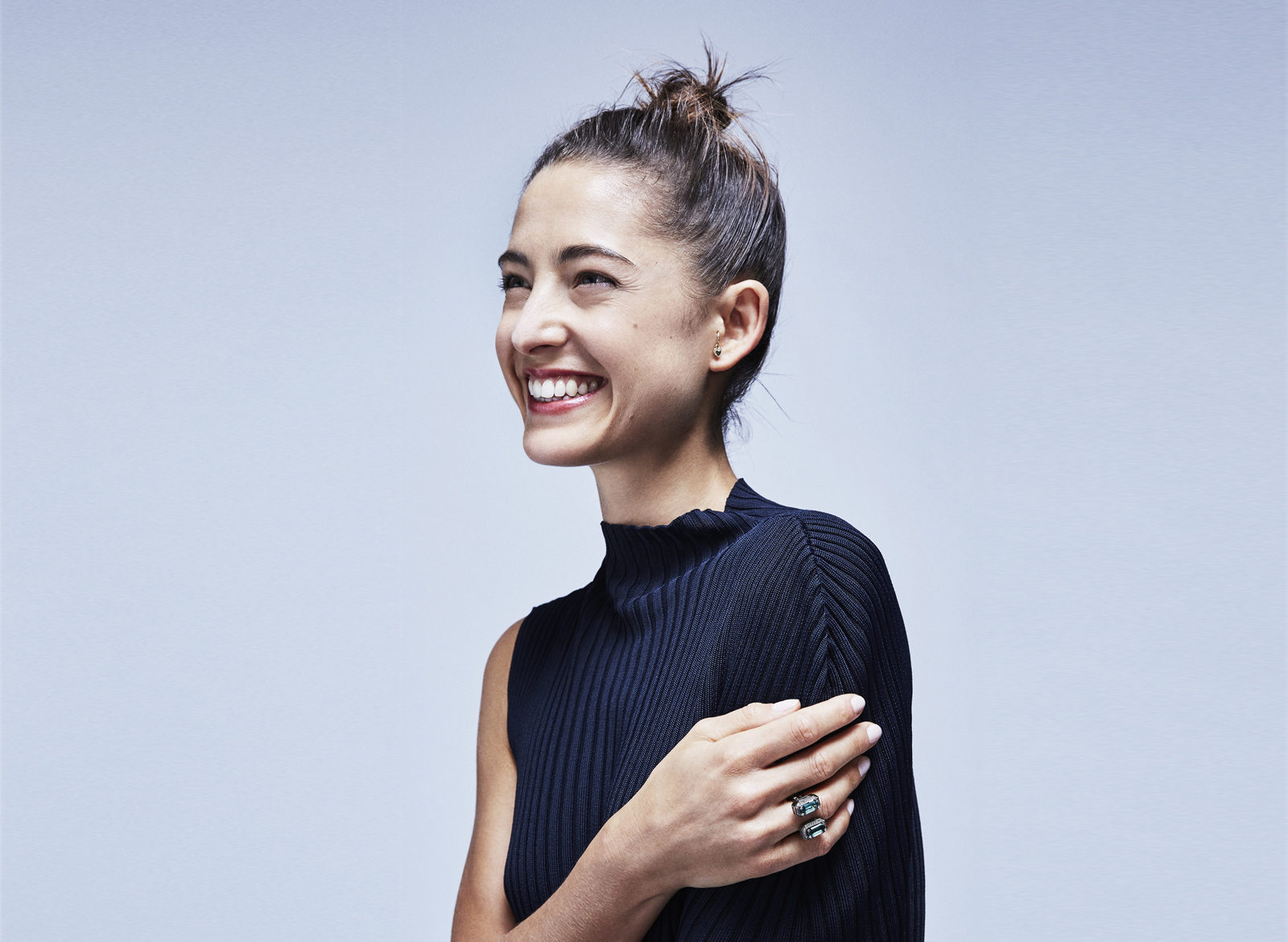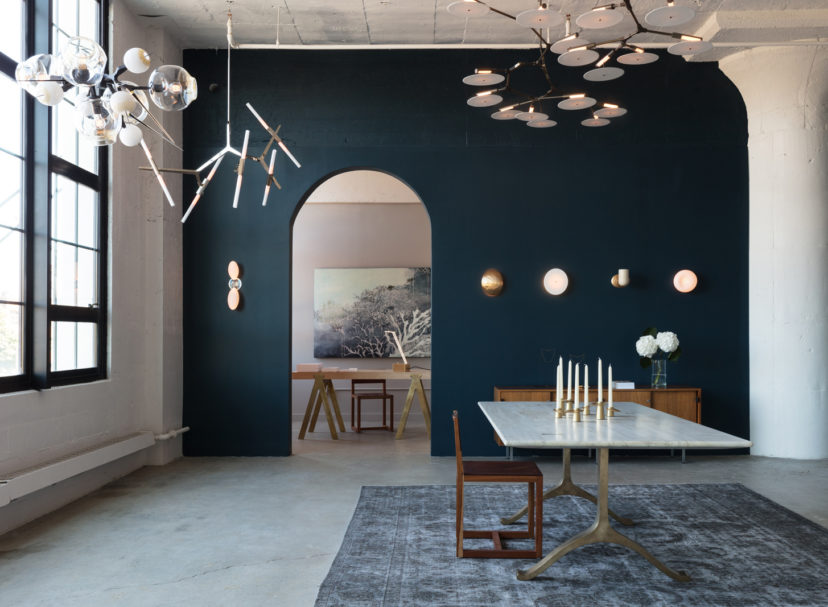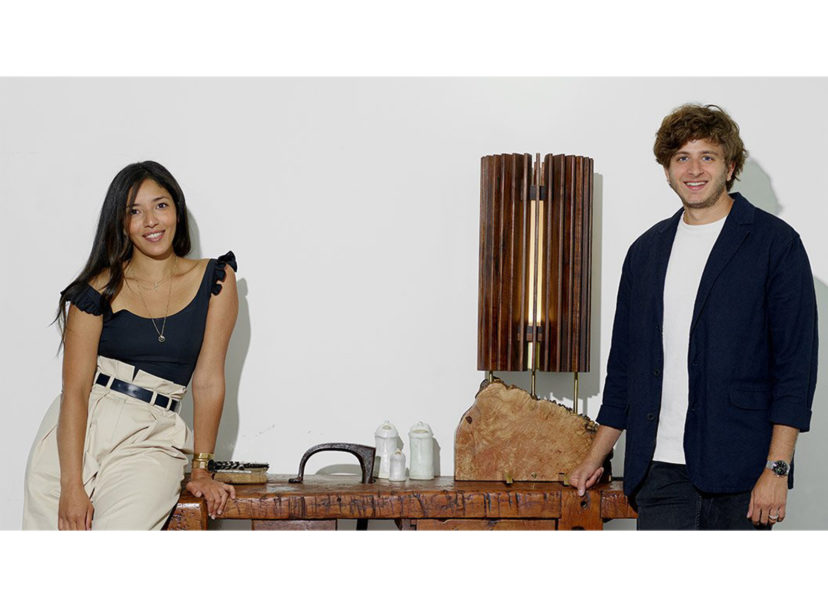Interview: Alec Coiro
Portrait: Christelle de Castro
Photo: Chris White
As we discuss below, Anna Karlin’s showroom in Chinatown is more than an assemblage of furniture in a room in a cool neighborhood. It’s a full on atmosphere that acknowledges history even as it looks forward to the future. The warmth of the brick is complemented by the tones in Karlin’s designs and richly illuminated by her lighting in a range of styles.
Karlin began her showroom project by returning the space to its turn-of-the-century state of grace and erasing the many identities the ‘80s had inflicted upon it. Seeing the space after it’s been populated with her work, I’m struck by the Karlin’s dual interest in the past and the future. Although, when I ask her about it, she reframes this duality as more of a dialog between the natural and the man-made. Either way, it’s a full success. Whether you consider the showroom as a whole or abscond with a single piece, Karlin’s work is considered, elegant, and unmistakably her own. She tells us more about it in the interview that follows.
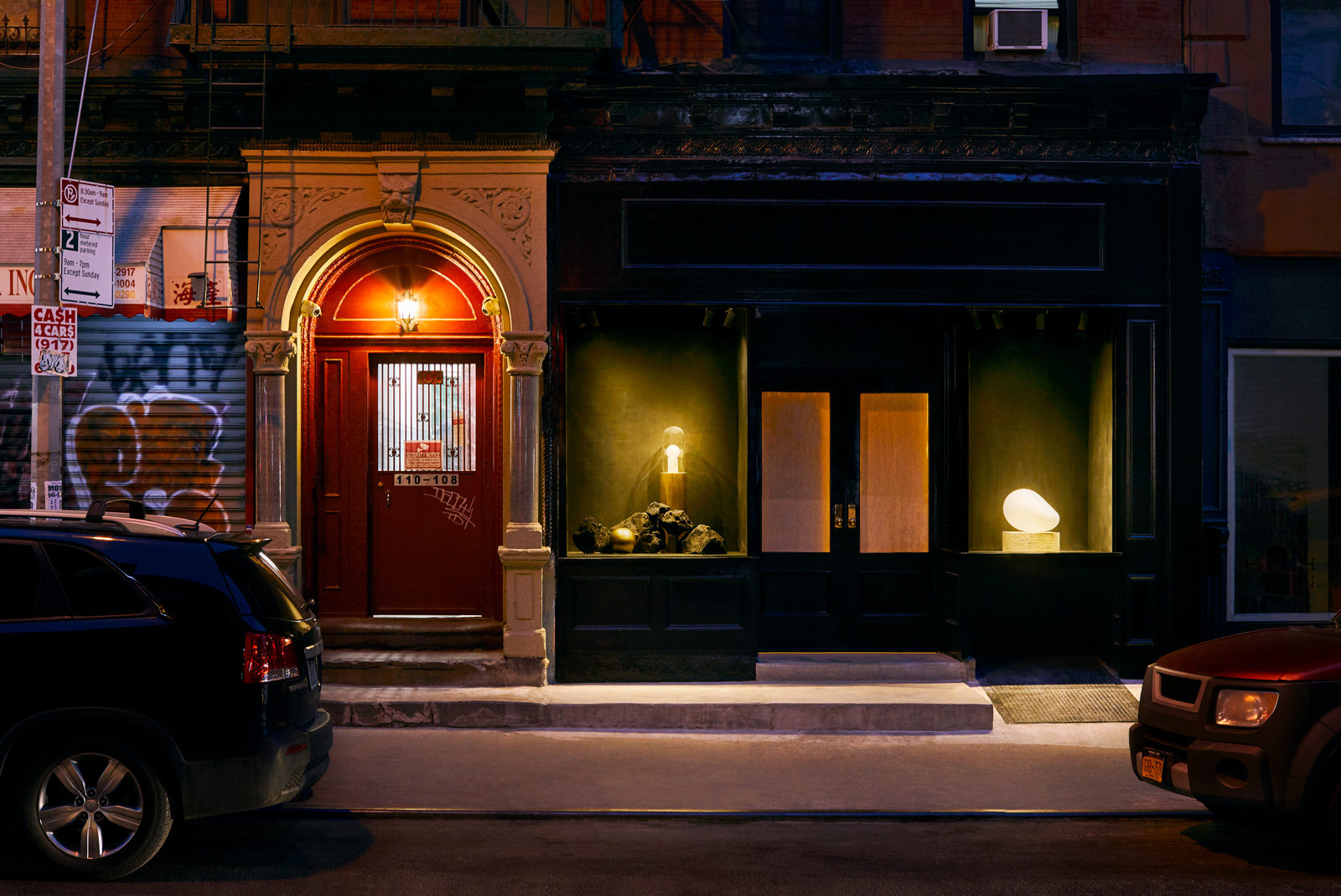
Congratulations on your amazing new showroom. Although to call it a showroom doesn’t quite capture the full scope of it. It’s really more of a total experience. What did you set out to accomplish with the space and what were some of the challenges along the way?
I set out to do exactly that, I wanted to create a little world. A space where from the moment you walk in, you are transported. Essentially you are taken on a journey to the inside of my head. It’s a space where everything has been considered but not over-designed, it’s not uptight and there’s a freedom to it, a feeling of finding parts of the space that look as if they have just been uncovered.
Construction is always a challenge, you have to accept that going in or it can be a torturous process!
Following up on that, to what extent did the space you found in Chinatown and its history help guide you toward the final, fully realized space?
I did research and restored the shop front. The original one had been ripped out and replaced with an 80’s monster. I went to the NYC government archives where you can pull pictures from the 1940s and then again from the mid-1980s that were taken as part of the governments real estate appraisal process. There was extensive fire damage on a lot of the walls, but where we could’ve left the walls in their found condition, embracing the layers of different paints from all the tenants over the years. The space was built in 1900. All buildings have history and good design replies on authenticity so I’ve tried to maintain and reveal that where I could.
Your designs and the way they are laid out in the showroom seamless mix the modern (almost futuristic) with classic shaker-inflected designs. Do you have a philosophy regarding the mixing of the modern with the historical?
We as humans have a fundamental need for familiarity or to be surrounded by natural forms. I envisioned my last collection as an exploration of the relationship between natural forms and the precision of the man-made. In each of my pieces, I have at first glance fulfilled that need thereby putting viewers at their ease. When one or both of these elements – that is familiarity and natural forms – are present in a work, a mental receptiveness is established which enables me to push the viewer further beyond the surface aesthetic. In this way, furniture becomes sculpture and the existing boundaries between the two fade.
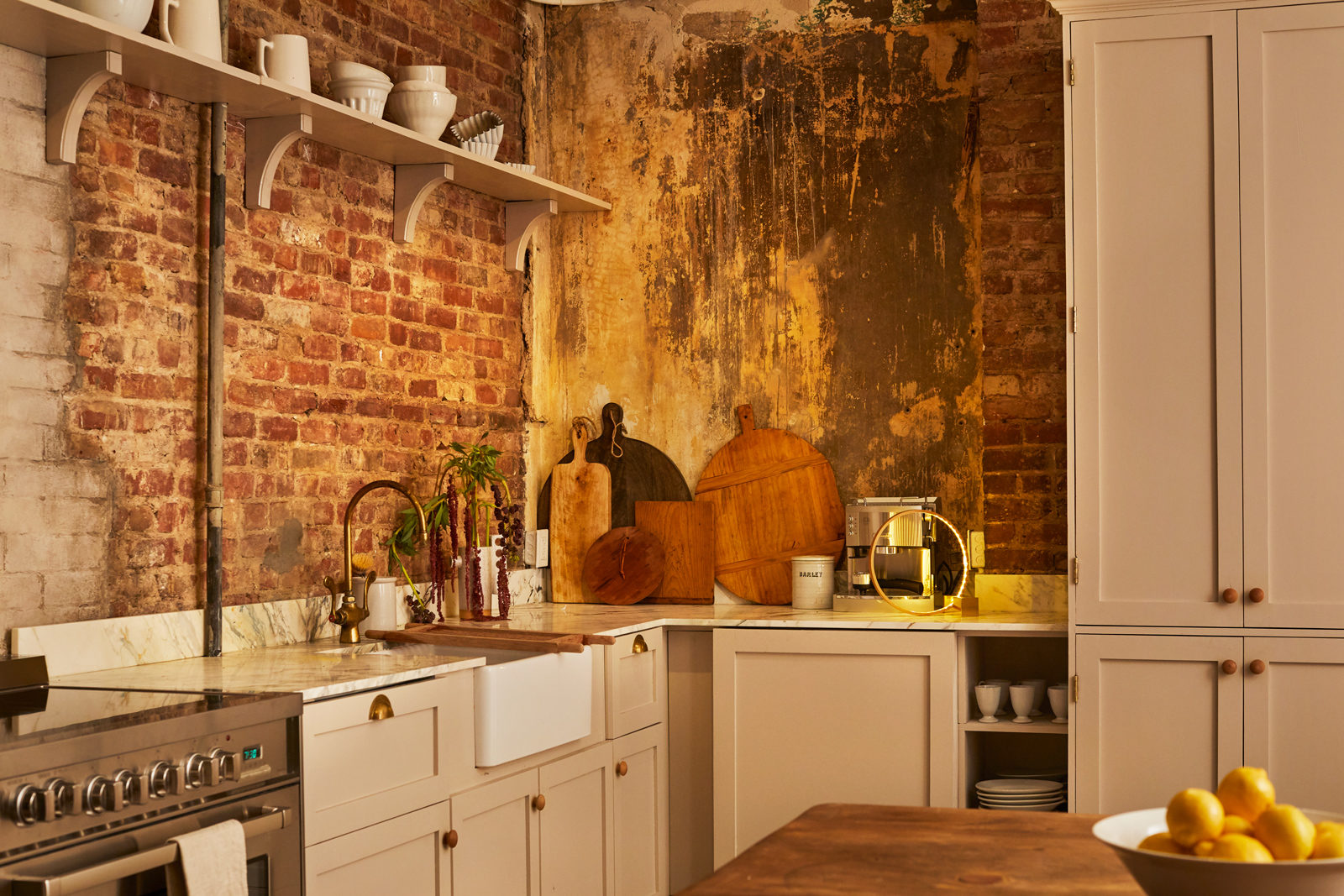
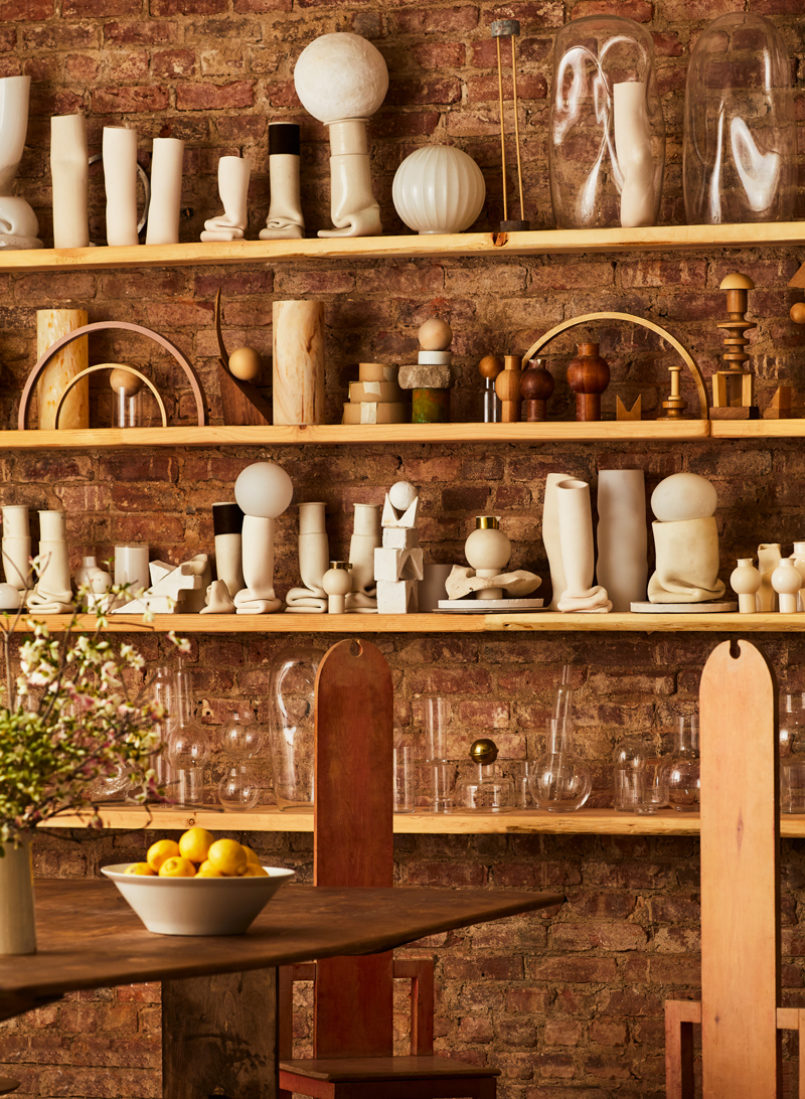
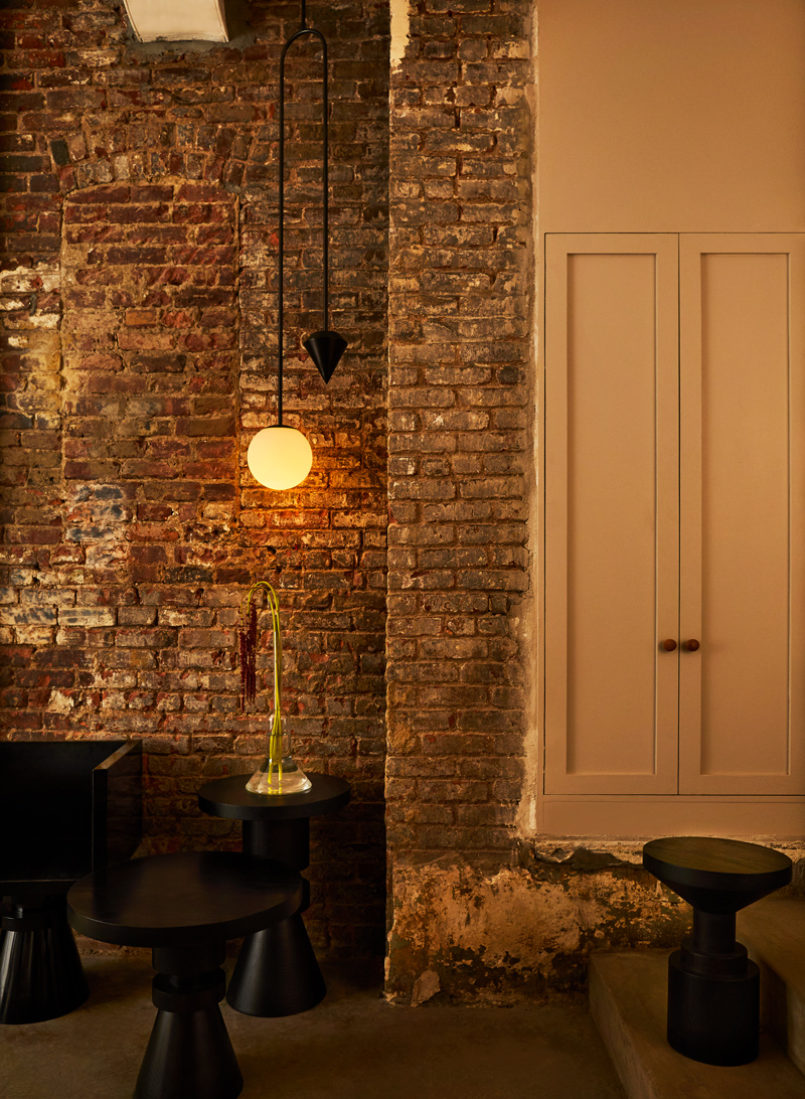
We as humans have a fundamental need for familiarity or to be surrounded by natural forms. I envisioned my last collection as an exploration of the relationship between natural forms and the precision of the man-made.
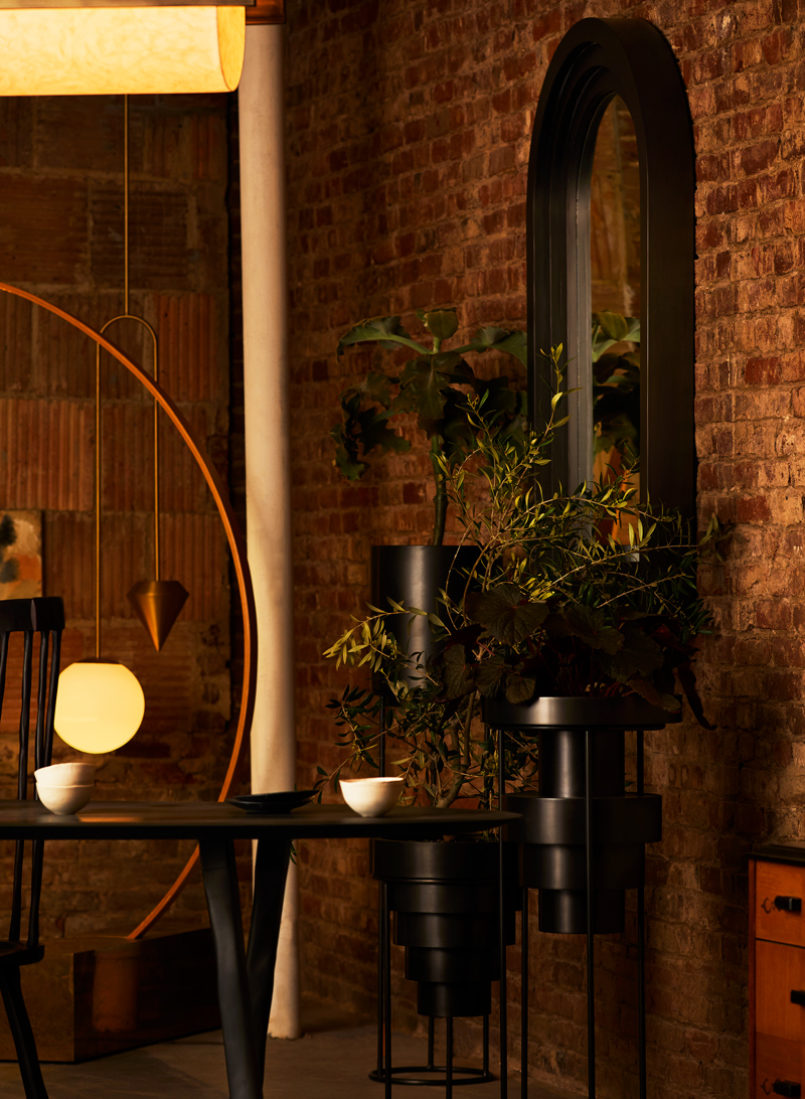
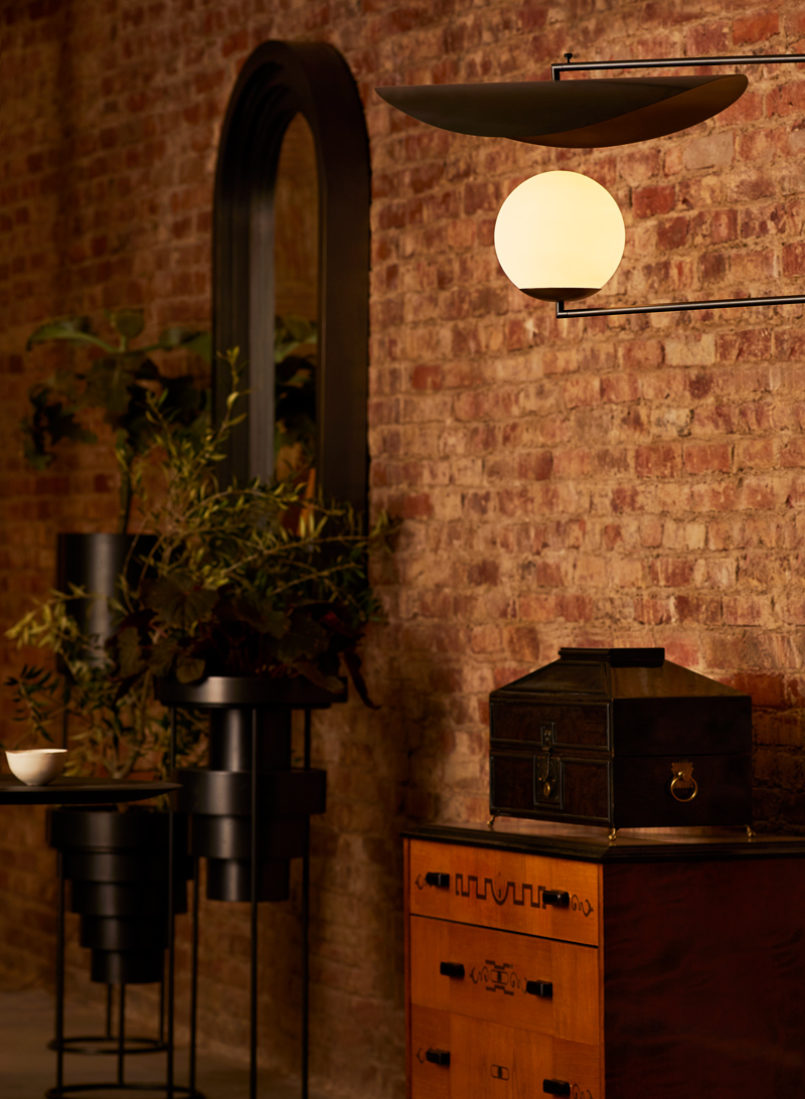
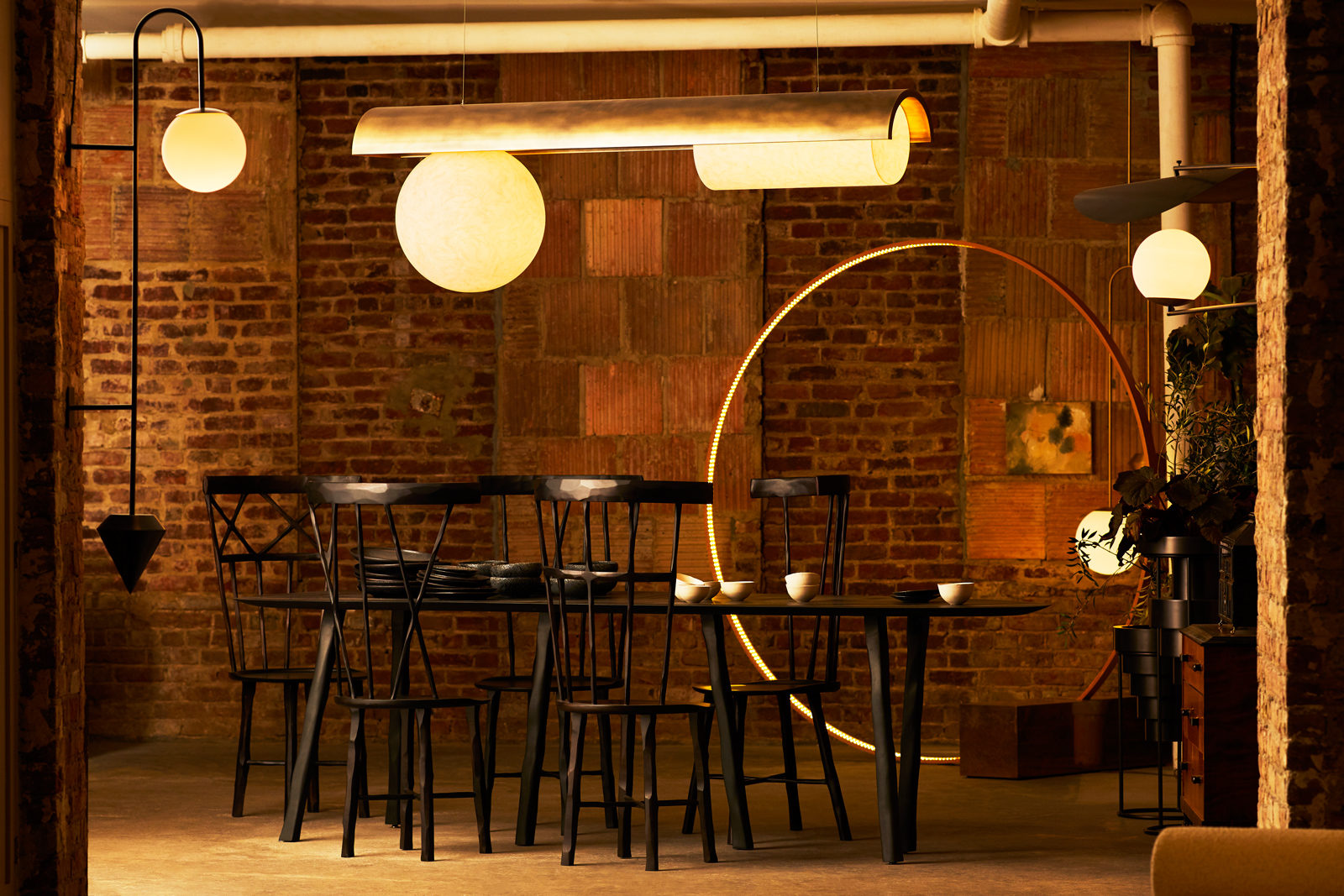
Similarly, your lighting design spans gracefully from traditional lighting to much more sculptural light fixtures. What do you look for in a light fixture, and what are your goals when you set out to create one?
Lighting is such a beautiful exercise in sculpture. You have every medium at your disposal. Working with light is very emotional medium so that’s what I look for, something that really is a piece of sculpture.
I was hoping that we could include a mini case study of a particular piece; I love the chaise you’ve included in the showroom. Can you tell us a little bit about it and how you conceived of it?
I always think about work in spaces. I grew up in London where everything was on a much smaller scale and furniture tends to be pushed to the edges of a room. Since moving to America my sense of scale has changed. I thought about this work as a piece of sculpture in the middle of a room. The drama is actually at the back of the piece; placed in a larger space, it allows for a 360-degree experience.
